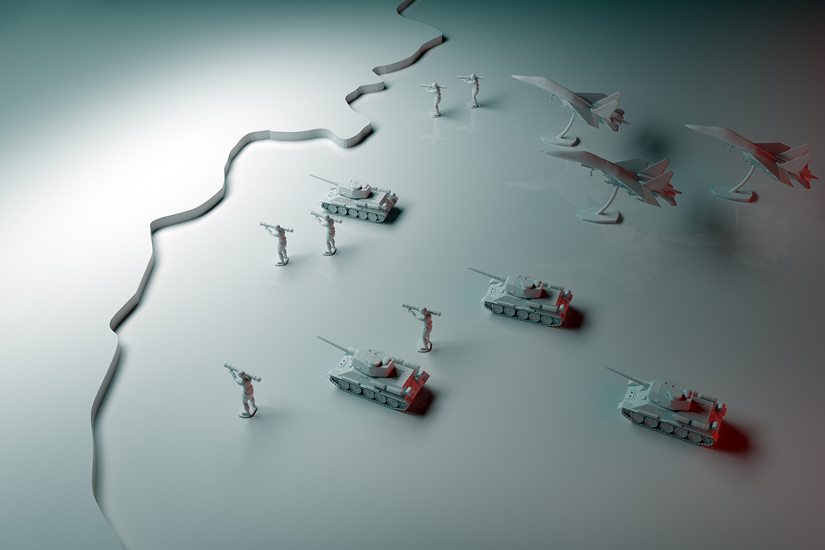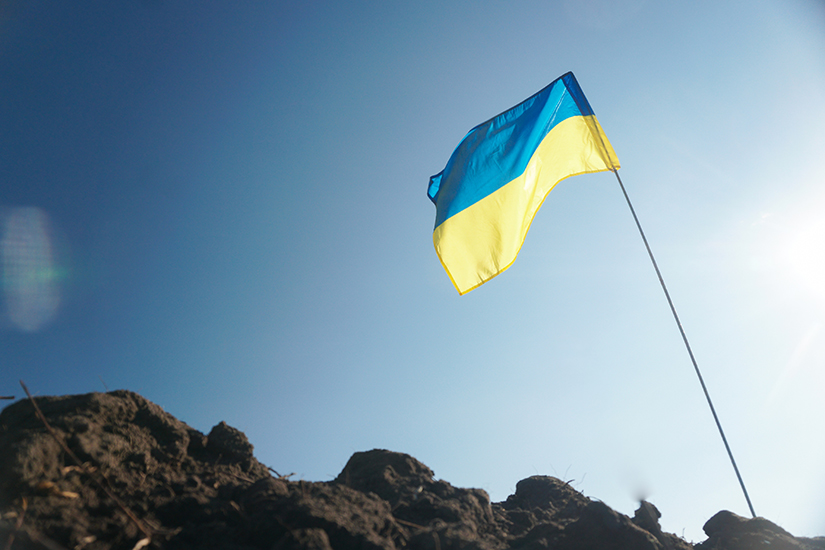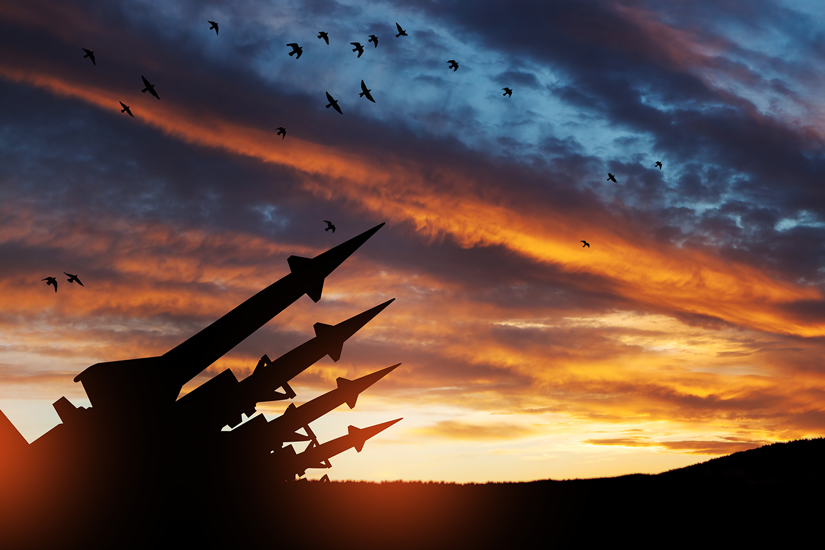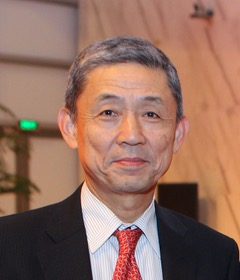Ever since Russia’s invasion of Ukraine, the state of the conflict can be most accurately described as “deadlock.” At the start of the invasion, the Ukrainian military fought back bravely and, contrary to the expectations of most, thwarted Russia’s attempt to gain control over the whole country through a short decisive battle.[1] At the same time, the offensive launched by Ukraine at the start of June this year, supported by Western weapons and ammunition, has not been observed as significantly successful over the past two months. This, too, has become deadlocked. The conflict in Ukraine so far shows glimpses of the essential qualities of a classical land battle. Despite its modern aspects of cyberspace, psychological, political, political, and information warfare, its closest analogies can be found in the experiences of World War II, World War I, or even the Siege of Port Arthur in the Russo-Japanese War. Russia’s current line of defense is especially reminiscent of the Western Front in World War I.
This article will analyze the state of the conflict in Ukraine with reference to these essential qualities of land battle. It will interpret the characteristics of the military situation visible from this deadlock, focusing on three perspectives: the “battles” fought using weapons by soldiers on the front line, the “operations” of units for attack and defense, and the “strategies” that combine several of these operations to command the entire war.
Perspective 1: “Battles” cannot be won by better weapons alone
In late July, the BBC carried an article titled “Ukraine war: Western armour struggles against Russian defences.”[2] The article noted that, even with the tanks and armored vehicles supplied by the West, it was no easy task to break through the Russian lines of defense. At around the same time, Colonel General Oleksandr Syrskyi, engaged in commanding a counteroffensive on Ukraine’s eastern front, commented “We'd like to get very fast results, but in reality it’s practically impossible.”[3] This is partly due to the strong positions built by the Russian military, defended with massive numbers of mines and barriers, which hinder any advance.[4] The Russian military is expert in the use of traditional anti-tank obstacles such as mines and various kinds of barriers. Russia has adopted these tactics ever since it set up defenses to oppose the blitzkrieg by the German Panzer corps in the region spanning what is now Ukraine through the western part of Russia in World War II. The Russian strategy was to draw the German military into a war of attrition, relying heavily on anti-tank obstacles for defense.
It appears that these anti-tank obstacles — hardly modern weapons — have been key to preventing Ukraine’s counteroffensive from progressing as expected. In addition to anti-tank mines, these include defenses such as so-called “dragon’s teeth” anti-tank barriers formed by lines of concrete tetrapods and anti-tank trenches that cannot be crossed even by vehicles running on continuous tracks. The first step taken in building a system of defenses is to place anti-tank obstacles such as these in front of the area of defense to stop any advance by the offensive side. Preparations are then made to shower the obstructed enemy with artillery to crush the attack. To attack a Russian military position, the Ukrainian military must first deal with the obstructions placed in front of the position. Otherwise, the Ukrainian tanks, brought to a standstill before the minefield, will become easy targets for Russian anti-tank missiles. The infantry accompanying the tanks are hampered by barbed wire entanglements, trapped, and transfixed by machine gun fire from the flank. This is a familiar image of the battlefield from the time of the Russo-Japanese War.

It seems that the Ukrainian military has implemented measures such as opening up roads using old Soviet-era tanks with mine-clearing rollers attached to the front. However, the work is difficult and time-consuming, constantly hindered by the defending side. It was clear before the launch of the offensive that Russia had prepared positions defended by a range of different obstacles, and it should be understood that, as Colonel General Syrskyi remarked, the offensive was never begun with an expectation of achieving “fast results.”
One point, however, that comes to mind from observing the Ukraine counteroffensive is that, while it is all very well having good weapons, neither attack nor defense is likely to succeed unless a sufficient volume of ammunition can be acquired. The need for the counteroffensive to eliminate anti-tank obstructions has already been pointed out. In doing so, the engineering corps primarily responsible for dealing with the obstructions will become the target of the infantry occupying the position and the artillery supporting this infantry from the rear. It will therefore become necessary to support these engineers by subjecting the enemy infantry and artillery to a rain of shells, thus hindering them from firing on the engineers. Even when the infantry attacking the position are able to overcome the obstructions and approach ready to storm the position, they must constantly keep firing machine guns, trench mortars, field guns and other artillery due to their isolation from the surrounding positions. This barrage requires neither accuracy nor much destructive power. Rather, to use a boxing metaphor, the attacking side must keep hitting out with jabs over a long period of time. The more prolonged the battle, the more effort and ammunition are needed to sustain this classical stream of fire.
After the attacking infantry overcome the obstructions and reach the Russian position, trench warfare awaits them. The image of attacks by the Ukrainian military presented in reports is reminiscent of the trench warfare from World War I or the Russo-Japanese War. It takes a high level of combat skills, determination, and masses of ammunition to capture and control each section of a trench. According to the New York Times, 3,000 rounds of ammunition were used by just two machine guns that provided direct support for the Ukrainian military to capture a single trench in May.[5] The consumption of artillery shells defies the imagination. Since the start of the conflict, the Ukrainian military has used 3,000 rounds of 155mm howitzer shells provided by the West per day, or 90,000 rounds per month. In other words, even if the U.S. allocated its total monthly production of 14,000 rounds, it would take over half a year to supply enough shells for the Ukrainian military to use in one month.[6] It doesn’t seem so long ago when, at the start of the conflict, the portable anti-tank and anti-aircraft missiles and other precision-guided weapons provided by the West played a substantial role. With the ground battle in deadlock, however, howitzers, tanks, and other weapons from a bygone era are playing an important role today.
It seems that this situation was partly behind the U.S. decision to supply cluster munitions. 155mm howitzers are able to fire cluster shells containing 88 or 72 submunitions.[7] A certain number of these submunitions will not explode, posing a threat to the general public if they remain in urban or other populated areas. For this reason, a treaty came into effect in 2010 to prohibit cluster munitions, signed by over 120 countries so far, including Japan. However, the parties involved this time — the U.S., Russia, and Ukraine — have not joined the treaty. Compared to the single-warhead shells supplied to Ukraine so far, cluster munitions spread submunitions with less destructive power over a broad area. A single shell can suppress a large area, and they are therefore ideal for use in the jab-style stream of fire mentioned above. This is one reason why the U.S. decided to supply these munitions, despite concern about the impact on public opinion internationally. Meanwhile, as noted above, the production of 155mm howitzer shells is nearing its limits, and perhaps unavoidable necessity also played some part in this decision.
Perspective 2: A decisive victory cannot be won without “operations” to encircle the enemy

It is said that, in general, the strength of an offensive force must substantially exceed that of a defensive force. This is especially true when the battle lines are deadlocked and it is necessary to attack an enemy that has already prepared systems of defense. One reason for this is that the visible contours of an attacking force are larger than those of a defending force, making it an easier target. Taking infantry as an example, soldiers in an attacking unit must show their full height to the enemy. By contrast, the defending soldiers can remain in their trenches, revealing only enough of their heads and shoulders to fire weapons. This difference is more conspicuous on flat ground. In woodlands or on uneven ground, the attacking force can remain hidden while it maneuvers for the attack, but the battlefields in which Ukraine is launching counterattacks are almost all located on broad, flat, open land, putting the attacking force at a disadvantage.
One more decisive reason that disadvantages any attack from deadlocked battle lines is that, in general, there is no way to maneuver around to the rear of the enemy force to encircle it. There are innumerable cases where the success of attacks has been decided by encircling the enemy and cutting off its lines of retreat and supply. In the middle of World War II, from 1942 to 1943, several of the largest tank battles in history were played out in the region from what is now southwest Russia across Ukraine. These include the battles at Kharkov, approximately 400km east of Kyiv, and Kursk, 200km north of Kharkov, or 450km south of Moscow. At first, Germany advanced rapidly, with a fighting force that overwhelmed that of the Soviets. However, the Soviets made use of their vast land area to retreat and wait for the German force to tire. From 1943 onwards, the Germans were drawn into a battle of attrition, pursued by the Soviet force. Gentle, rolling hills and plains spread all across this region, made famous by the film Sunflower (I Girasoli), starring Sophia Loren. This topography enables daring maneuvering by mobile, large-scale tank units to the rear of an enemy. Once surrounded, with no way of retreat and severed supply lines, any unit is doomed. Both the Germans and the Soviets fought on high morale, but once encircled, even a unit of a hundred thousand would have no option but to surrender. To continue to resist would mean certain annihilation. Historically, Napoleon won many victories this way, and in the blitzkrieg at the start of World War II and the subsequent Soviet counteroffensive, overwhelmingly superior units surrounded and wiped out their enemies.
Ever since the brave fighting by Ukraine last spring and the subsequent deadlock of the battle lines, there seems little chance for either of the Russian or Ukrainian forces to encircle and annihilate the other. Firstly, with the two armies glaring at each other face-to-face across the deadlocked battle lines, it is not possible to maneuver for a surprise attack to the rear of the front-line units. Secondly, it appears extremely difficult for either side, especially Ukraine, to achieve overwhelmingly superior fighting power. The only chance is to break through the Russian line of defense and maneuver to the rear of its positions, surrounding the front-line units in a localized area. However, breaking through the Russian defenses is no easy task, and unless the attacking force boasts sufficient fighting power, it will reach the rear of the Russian positions only to find itself surrounded.
It appears that the objective of the Ukrainian military is not so much to engage in breathtaking operations to win decisive battles, but rather to gradually expand the area under its control, regaining lost territory. If that is true, then it is possible to perceive some degree of success in the ostensibly slow progress of the counteroffensive. It seems that the steady offensive to win back key cities, bridges, and other locations will continue in the regions occupied by Russia.
Perspective 3: Ukraine is also placed under “strategic” limitations
This article has already examined how difficult it will be for Ukraine to achieve a swift military victory. In addition, strategic limitations are also placed on how Ukraine can carry out its offensive. It is not in a position to pursue total victory using any means at its disposal. Both the means and the object of this war are subject to limitations.
First of all, the scope of action that Ukraine can take is largely dependent on the degree of support provided by the West. In addition to the strong determination of President Zelenskyy and the Ukrainian people, the boost to this determination provided by Western support has been behind the brave fighting by Ukraine since the start of the conflict. Nevertheless, Ukraine is not able to direct decisions on the details of this support or its schedule. Looking back over the past one-and-a-half years with this point in mind, it would seem that the West has neither the ability nor the desire to support Ukraine to win an overwhelming victory over Russia. From the standpoint of a third-party observer, the support provided to Ukraine seems sufficient to prevent them from losing, but far from enough to enable Ukraine to completely overpower Russia.
Perhaps this fact also has a strategic significance: that is, in the world of nuclear strategy. Ever since the start of the conflict, Russia has constantly hinted at the use of tactical nuclear weapons. Belarus revised its constitution immediately before the start of the conflict to enable nuclear weapons to be carried into the country. It even mentioned the possibility that Russia’s nuclear weapons may be advanced and deployed within Belarus.[8] President Putin has also stated that if the West obstructs Russia’s actions then it will face consequences more serious than it has ever experienced, hinting at the use of tactical nuclear weapons.[9] It is slightly over 400km from the Ukraine-Russia border to Moscow. Today, with Ukraine repainted in the colors of the West, Russia feels the buffer zone with NATO is all too slim. If it becomes clear that Moscow is threatened, there is a risk that Russia may be driven to a point where it does not eschew the use of tactical nuclear weapons. It would be a miracle if Ukraine, which does not possess nuclear weapons, were able to achieve some of its war objectives with conventional weapons, while avoiding a scenario in which Russia makes use of its nuclear arsenal.

Conclusion
The deadlock shows no indications of changing drastically at present. On the other hand, the morale of Ukraine’s counteroffensive also shows no sign of cooling. On August 12, the New York Times published an article presenting the view that Ukraine’s counteroffensive had achieved remarkable tactical results. The article argued that, while the depth of land reclaimed by the Ukraine offensive is no more than 10–12 miles, this has forced the Russian military to redeploy front-line units from other defensive zones, effectively weakening the entire Russian defensive position.[10] Russia occupies thin strips of land stretching east to west along the coasts of the Black Sea and the Sea of Azov. There is not much depth to this occupied land in the case of an attack from the north. Therefore, even if the Ukrainian offensive progresses only in some areas, the Russian-occupied zone faces the risk of becoming fragmented.
Under these circumstances, even a partial pull-back of the battle lines by Russia would result in a significant recovery of lost territory for Ukraine, perhaps providing initiative for a cease-fire. If Ukraine wins a war of attrition by relentlessly continuing its counteroffensive, will this provide Russia with the impetus to approach the negotiating table and seek a cease-fire? Neither scenario, however, signifies an end to the war. To take a historical example, the combatants will merely have reached the same stage that led to the conclusion of the Korean Armistice Agreement 70 years ago. There is still a long way to go before the issue is resolved, and it is crucial to face up to the reality that, until it is, the world will continue to live with the threat of tactical nuclear weapons.
(2023/09/26)
Notes
- 1 A report by the Royal Unified Service Institute, a U.K. think tank, points out that “Russia planned to invade Ukraine over a 10-day period and thereafter occupy the country to enable annexation by August 2022.” Mykhaylo Zabrodskyi, et.al, Preliminary Lessons in Conventional Warfighting from Russia’s Invasion of Ukraine: February-July 2022, Royal United Services Institute (RUSI), p.1.
- 2 Jonathan Beale, “Ukraine war: Western armour struggles against Russian defences,” BBC, July 27, 2023.
- 3 Jonathan Beale, “Ukraine war: No fast results in offensives, warn Ukraine’s General Syrskyi,” BBC, July 18, 2023.
- 4 Ibid., Russia's defensive preparations are reported in detail in Daniele Palumbo & Erwan Rivault, “Ukraine war: Satellite images reveal Russian defences before major assault,” May 22, BBC, 2023.
- 5 Andrew E. Kramer, “Storming a Trench Is Treacherous Business. Here’s How It’s Done,” New York Times, June 8, 2023.
- 6 “US ammunition supplies dwindle as Ukraine war drains stockpiles,” AFP BB News, October 11, 2022.
- 7 Mark F. Cancian, “Cluster Munitions: What Are They, and Why Is the United States Sending Them to Ukraine?,” CSIS, June 10, 2023.
- 8 “Belarus referendum approves proposal to renounce non-nuclear status – agencies,” Reuters, February 28, 2022.
- 9 Michael O’Hanlon, “Putin is angry, but he isn’t mad,” The Wall Street Journal, March 9, 2022.
- 10 Marc Santora, “Ukraine Makes ‘Tactically Significant’ Progress in Its Counteroffensive,” New York Times, August 12. 2023.

